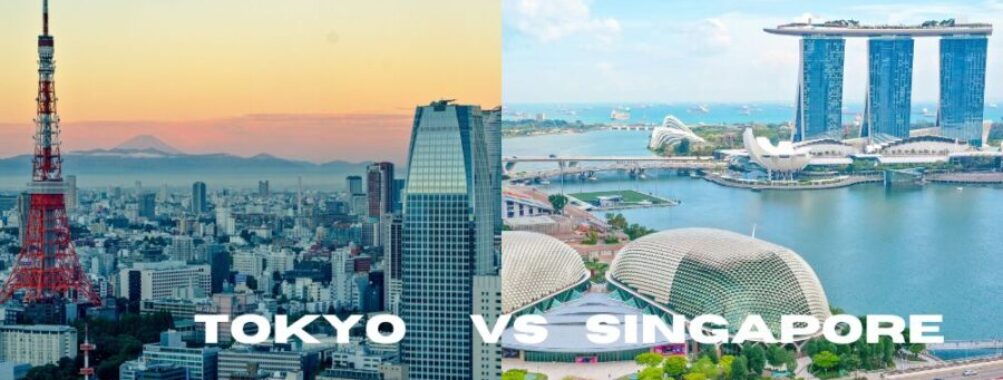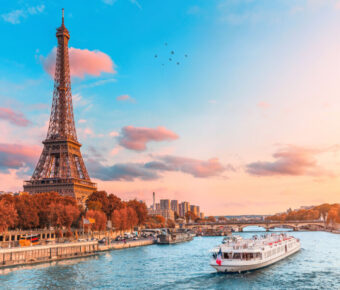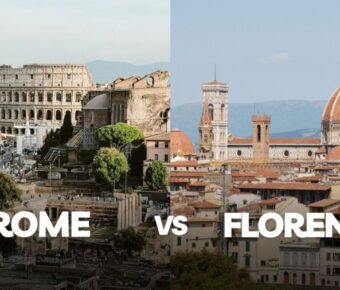
Tokyo vs Singapore: Cost of Living Showdown in Asia’s Most Advanced Cities
Tokyo and Singapore stand as two of Asia’s most captivating cities, each offering unique experiences for travelers. These modern metropolises blend cutting-edge technology with rich cultural traditions, making them top choices for anyone planning an Asian adventure. Singapore edges out Tokyo for attractions and activities, with enough things to do for 2-7 days, while Tokyo needs 3-7 days to explore properly.
Both cities excel in efficiency and safety, with world-class public transit systems and low crime rates that make them perfect for solo travelers. Tokyo dazzles visitors with its neon-lit streets and ancient temples, while Singapore amazes with its futuristic architecture and diverse cultural neighborhoods. The food scenes in both destinations showcase incredible variety, from Tokyo’s sushi bars and ramen shops to Singapore’s hawker centers filled with Chinese, Malay, and Indian delights.
Contents
- History and Evolution
- Historical Timeline
- Impact on Cultural Identity
- Geographical and Urban Landscape
- Iconic Landmarks
- Cities’ Layout and Design
- Economic Insights
- Cost of Living Comparison
- Business and Employment Opportunities
- Cultural Fabric
- Arts and Heritage
- Popular Traditions and Celebrations
- Culinary Scene
- Signature Dishes
- Dining Culture
- Lifestyle and Activities
- Leisure and Recreation
- Outdoor and Adventure
- Nightlife and Entertainment
- Transportation Networks
- Public Transit Systems
- Accessibility and Convenience
- Accommodation and Hospitality
- Hotels and Resorts
- Experience and Service Quality
- Environmental Factors
- Climate and Weather Patterns
- Urban Greenspaces
- Frequently Asked Questions
- What are the cost of living differences between Tokyo and Singapore?
- How do the salaries compare between Tokyo and Singapore?
- Which city is recommended for a vacation, Tokyo or Singapore, and why?
- What are the size comparisons between Tokyo and Singapore?
- Between Tokyo and Singapore, which city is considered better for permanent residency?
- How do Tokyo and Singapore rank against each other in terms of economic prosperity?
- More Travel Guides
History and Evolution
Tokyo and Singapore evolved through vastly different paths to become the modern metropolises they are today. Both cities transformed from humble beginnings into global powerhouses while maintaining strong ties to their cultural roots.
Historical Timeline
Tokyo started as a small fishing village called Edo in the 1100s. The city gained prominence when Tokugawa Ieyasu made it his base in 1603. Edo grew into Japan’s political center during the Tokugawa shogunate period.
The city became Tokyo in 1868 when Emperor Meiji moved the imperial capital from Kyoto. After World War II bombings destroyed much of the city, Tokyo rebuilt itself into a technological and economic marvel.
Singapore’s story began in 1819 when Sir Stamford Raffles established it as a British trading post. The port city quickly grew into a vital colonial hub, connecting European and Asian trade routes.
Japanese forces occupied Singapore from 1942 to 1945. The city gained self-governance in 1959 and became part of Malaysia in 1963. Two years later, it became an independent nation.
Impact on Cultural Identity
Tokyo preserves its Japanese heritage while embracing innovation. Ancient temples stand next to modern skyscrapers. Traditional tea ceremonies and kabuki theater remain popular alongside anime culture and high-tech gadgets.
The mix of old and new shapes daily life in Tokyo. Many residents wear kimonos to special events and celebrate centuries-old festivals while living thoroughly modern lives.
Singapore’s identity emerges from its blend of Chinese, Malay, Indian, and Western influences. This diversity shows in its architecture, from colonial buildings to Chinese temples and Malay mosques.
The city-state’s strict rules and urban planning created a unique culture that values order and cleanliness. Traditional hawker centers serve local dishes next to high-end restaurants, reflecting Singapore’s evolution from trading post to global city.
Geographical and Urban Landscape
Tokyo and Singapore stand apart in their distinct urban designs and iconic structures. Each city showcases unique architectural marvels and thoughtful city planning that reflect their cultural heritage and modern aspirations.
Iconic Landmarks

The Tokyo Skytree dominates Japan’s capital at 634 meters, making it the tallest structure in the country. Its sleek design combines traditional Japanese aesthetics with cutting-edge technology. The classic Tokyo Tower, painted in white and orange, remains a beloved symbol of the city’s post-war rebirth.
Singapore’s skyline features the striking Marina Bay Sands, with its ship-like SkyPark perched atop three 55-story towers. This architectural marvel has become the city-state’s most recognizable building since its completion in 2010.
Cities’ Layout and Design

Tokyo spreads across a vast area with distinct neighborhoods, each with its own character. The city mixes ultra-modern districts like Shibuya with traditional areas such as Asakusa. Small streets and alleyways wind between towering skyscrapers, creating an exciting urban maze.
Singapore’s layout follows a more structured grid pattern with carefully planned green spaces. Gardens by the Bay spans 101 hectares, featuring futuristic Supertrees and climate-controlled conservatories. The city masterfully integrates nature into its urban fabric.
Clean, wide streets and efficient public transportation networks connect Singapore’s various districts. The city-state’s compact size makes it easier to navigate than Tokyo’s sprawling metropolis. The Urban Redevelopment Authority maintains strict guidelines for Singapore’s growth, ensuring balanced development. This creates a harmonious blend of high-rises, parks, and residential areas.
Economic Insights
Tokyo and Singapore stand as economic powerhouses in Asia, with each city offering unique advantages for residents and businesses. Both cities maintain strong financial sectors, impressive GDP numbers, and distinct approaches to economic growth.
Cost of Living Comparison

Living costs in Tokyo and Singapore rank among the highest globally. A one-bedroom apartment in central Tokyo costs about $1,800 monthly, while similar units in Singapore average $2,500.
Food expenses differ between the cities. A meal at a casual restaurant in Singapore runs about $15, compared to $12 in Tokyo. Grocery prices tend to be 15-20% higher in Singapore.
Transportation costs less in Tokyo, with monthly passes around $90, versus Singapore’s $120. Both cities have excellent public transit systems that reduce the need for cars.
Business and Employment Opportunities

Singapore’s job market attracts global talent with its favorable tax rates and growing tech sector. The city-state focuses on finance, biotech, and digital innovation.
Tokyo’s massive economy provides diverse job options in tech, finance, and manufacturing. The city leads in robotics and automotive industries. Many global companies maintain Asian headquarters here.
Both cities welcome foreign workers, but Singapore offers more English-speaking positions. Work visas in Singapore tend to be easier to obtain than in Japan.
Starting a business takes about 2 days in Singapore compared to 11 days in Tokyo. Singapore ranks higher for ease of doing business due to simpler regulations and lower corporate tax rates.
Cultural Fabric
Both cities showcase rich cultural heritage through different lenses – Tokyo’s deep-rooted Japanese traditions blend with modern pop culture, while Singapore’s multicultural identity creates a unique fusion of Asian influences.
Arts and Heritage

The Meiji Shrine stands as a peaceful sanctuary in Tokyo’s bustling landscape. Its traditional architecture and serene gardens give visitors a glimpse into Japan’s spiritual heritage.
Tokyo’s art scene thrives with a mix of ancient and contemporary. The city’s museums display everything from ancient samurai artifacts to cutting-edge digital art installations.
Manga and anime culture shapes Tokyo’s modern identity. You’ll find entire districts like Akihabara dedicated to these art forms, with colorful shops and themed cafes bringing characters to life.
Popular Traditions and Celebrations

Cherry blossom season transforms Tokyo into a pink wonderland each spring. Locals and tourists gather for hanami (flower viewing) parties under blooming sakura trees in parks and along river banks.
Singapore’s cultural calendar bursts with celebrations from its diverse communities. Lunar New Year fills streets with red lanterns and lion dances, while Deepavali brings colorful rangoli art and festive lights.
Food festivals showcase Singapore’s mixed heritage. The annual Singapore Food Festival highlights dishes from Chinese, Malay, Indian, and Peranakan traditions.
Traditional performances keep heritage alive in both cities. Singapore’s Chingay Parade features elaborate costumes and dances, while Tokyo’s summer matsuri festivals bring neighborhoods together with folk dancing and street food.
Culinary Scene
Both Tokyo and Singapore offer incredible food experiences that blend tradition with innovation. Each city has its own unique food culture that reflects local history and modern influences.
Signature Dishes

Tokyo’s food scene centers around perfectly crafted Japanese classics. Fresh sushi and sashimi shine at places like Tsukiji Outer Market. Steaming bowls of ramen come in countless varieties, from rich tonkotsu to light shoyu broths.
Street food in Tokyo includes crispy tempura, grilled yakitori skewers, and savory okonomiyaki pancakes. Many restaurants specialize in just one dish, perfecting it over generations.
Singapore’s hawker centers serve up beloved local specialties at reasonable prices. The national dish, Hainanese chicken rice, features tender poached chicken with fragrant rice. Chili crab brings together sweet crab meat with spicy sauce perfect for dipping mantou buns.
Laksa, a spicy coconut noodle soup, shows the blend of Chinese and Malay influences. Indian favorites like roti prata and biryani add to Singapore’s diverse food landscape.
Dining Culture

Tokyo’s dining culture emphasizes presentation and precision. Many restaurants are tiny, specializing in specific cooking styles. Conveyor belt sushi restaurants offer casual dining, while high-end spots require advance bookings.
Dining etiquette matters in Tokyo. People rarely eat while walking. Slurping noodles is common and shows appreciation for the food.
Singapore’s hawker centers buzz with energy as locals gather to share meals. Food courts in shopping malls offer air-conditioned alternatives. The “chope” culture of reserving seats with tissue packets is uniquely Singaporean.
Fine dining thrives in both cities. Singapore’s restaurants earn Michelin stars for creative fusion cuisine. Tokyo holds the record for most Michelin-starred restaurants globally.
Lifestyle and Activities
Tokyo and Singapore both excel at offering diverse activities for every interest. Each city creates unique experiences through their distinct cultural influences and modern attractions.
Leisure and Recreation

Singapore shines with family activities at Sentosa Island, where visitors find beaches and attractions. Palawan Beach provides calm waters perfect for swimming, while Tanjong Beach draws those seeking a peaceful escape.
Book exciting tours and activities at these popular spots to make the most of your visit.
Tokyo’s parks offer peaceful spaces in the busy city. Ueno Park becomes magical during cherry blossom season, with families gathering for picnics under pink petals. The park houses several museums and a zoo.
Outdoor and Adventure
Singapore’s parks and nature reserves create outdoor adventures minutes from the city center. Visitors can trek through rainforests, spot monkeys, and discover hidden waterfalls.
Find guided adventure tours to explore these natural wonders safely.
Tokyo’s surrounding mountains provide hiking opportunities and hot springs. The city itself offers cycling routes along rivers and through historic neighborhoods.
Nightlife and Entertainment

Tokyo’s Roppongi district pulses with energy after dark. The area features international restaurants, trendy bars, and clubs playing everything from jazz to electronic music.
Singapore’s nightlife scene spans rooftop bars with skyline views to bustling night markets. Clarke Quay draws crowds with riverside dining and live music venues.
Both cities ensure safe nights out with excellent public transport and well-lit streets. Late-night shopping at Orchard Road in Singapore and Tokyo’s entertainment districts keeps the cities alive until dawn.
Transportation Networks
Both Tokyo and Singapore offer world-class transportation systems that make getting around easy and efficient. Each city has built impressive networks that connect different areas through trains, buses, and other transit options.
Public Transit Systems

Tokyo’s massive rail system includes multiple subway lines, commuter trains, and monorails that weave through the sprawling metropolis. The network connects major hubs like Shibuya and Shinjuku, carrying millions of passengers daily.
One unique aspect is that Tokyo has separate subway operators – Tokyo Metro and Toei – plus JR lines running above ground. This can mean extra steps when changing between systems.
Singapore’s MRT (Mass Rapid Transit) system uses a single integrated network. The trains and stations are clean, modern, and reliable. New lines and stations keep expanding to serve more neighborhoods.
Accessibility and Convenience

Both cities make it simple to reach popular spots. In Tokyo, stations near Shinjuku Gyoen National Garden and other attractions have clear signs in multiple languages.
Singapore’s transport system excels at airport connectivity. The MRT takes travelers directly from Changi Airport to the city center in about 30 minutes.
Bus networks complement the rail systems in both places. Singapore’s buses reach areas the MRT doesn’t cover, while Tokyo’s buses help connect spots between train stations.
Smart cards make paying fares easy. Tokyo uses IC cards like Pasmo and Suica, while Singapore has the EZ-Link system. Tourists can buy short-term passes in either city.
Accommodation and Hospitality
Both cities offer world-class lodging options that cater to every budget and preference, with exceptional service standards that reflect their unique cultural values.
Hotels and Resorts

Tokyo’s accommodation scene mixes ultra-modern luxury with traditional Japanese hospitality. The Ritz-Carlton Tokyo stands out with its sky-high views and signature Japanese elegance. Traditional ryokans provide an authentic cultural experience with tatami floors and communal baths.
Singapore’s hotels blend colonial charm with contemporary luxury. Many find great hotel deals across the city’s diverse neighborhoods. Marina Bay features iconic properties with infinity pools and city views.
Family travelers love Singapore’s resort-style hotels on Sentosa Island. These properties offer kid-friendly amenities and easy access to attractions.
Experience and Service Quality
Japanese omotenashi (hospitality) sets Tokyo apart. Staff maintain impeccable attention to detail and anticipate guest needs before they arise. Many hotels offer unique cultural programs like tea ceremonies and kimono fittings.
Singapore’s multicultural heritage shapes its hospitality approach. Staff typically speak multiple languages and understand diverse cultural preferences. Hotels often combine Western comfort with Asian service traditions.
Budget travelers find clean, efficient pod hotels in Tokyo and modern hostels in Singapore’s ethnic quarters. Both cities maintain high cleanliness standards even in lower-priced accommodations.
Small boutique hotels in traditional neighborhoods offer intimate experiences in both cities. These hidden gems provide personalized service and local insights not found in larger establishments.
Environmental Factors
Tokyo and Singapore face unique environmental challenges as major urban centers in Asia. Both cities have taken different approaches to managing their climate conditions and creating green spaces within their dense cityscapes.
Climate and Weather Patterns

Singapore stays hot and humid year-round with temperatures hovering around 26°C. The city gets lots of rain throughout the year, which helps keep the air clean and supports its lush greenery.
Tokyo’s weather changes a lot more through the seasons. Winters can drop to around 4°C while summers get hot and sticky. The city sees four distinct seasons, with cherry blossoms in spring and colorful leaves in fall.
Both cities deal with high humidity, but Singapore’s is more constant. Tokyo’s humidity peaks during the rainy season from June to July. Both places have adapted well to their climate challenges with excellent air conditioning systems everywhere you go.
Urban Greenspaces

Singapore shines as a green city with its impressive Gardens by the Bay. These futuristic gardens span 101 hectares and feature iconic Supertrees that light up at night. The city has also created many rooftop gardens and green walls on buildings.
Tokyo’s green spaces blend traditional and modern styles. Ueno Park stands out as one of the city’s largest parks, famous for its spring cherry blossoms and museums. The city has smaller pocket parks and traditional Japanese gardens scattered throughout.
Singapore leads in the amount of greenery, with plants covering almost every building and street. Tokyo’s parks are more spread out, but they offer peaceful spots away from the busy streets.
Frequently Asked Questions
Tokyo and Singapore bring unique advantages in living costs, job markets, quality of life, and economic power that shape decisions about visiting or relocating to these dynamic Asian cities.
What are the cost of living differences between Tokyo and Singapore?
Living costs in Singapore tend to be higher than Tokyo, with housing being the biggest expense. A one-bedroom apartment in central Singapore costs about 25% more than a similar unit in Tokyo.
Food and transportation costs less in Tokyo thanks to cheaper grocery stores and an extensive public transit system. Daily necessities like toiletries and clothing also come with lower price tags in Tokyo.
How do the salaries compare between Tokyo and Singapore?
Singapore offers higher average salaries, especially in finance, tech, and business sectors. Entry-level positions in Singapore pay around 15-20% more than similar roles in Tokyo.
Tokyo’s salary growth moves at a slower pace but comes with more job security and benefits like housing allowances and transportation reimbursement.
Which city is recommended for a vacation, Tokyo or Singapore, and why?
Tokyo shines for travelers seeking deep cultural experiences, unique entertainment, and food adventures. The city mixes ancient temples with robot restaurants and cat cafes.
Singapore works better for easy exploration, luxury shopping, and year-round warm weather. Clean streets, English signage, and efficient transportation make Singapore very tourist-friendly.
What are the size comparisons between Tokyo and Singapore?
Tokyo spans 2,194 square kilometers, making it about three times larger than Singapore’s 728 square kilometers.
Tokyo packs in around 37 million people in its metro area. Singapore has a much smaller population of 5.6 million residents.
Between Tokyo and Singapore, which city is considered better for permanent residency?
Singapore ranks higher for expats due to English being widely used, quality healthcare, and excellent schools. The immigration process tends to be more straightforward than Japan’s system.
Tokyo appeals more to those wanting to fully immerse in Japanese culture. The language barrier can make daily life challenging for non-Japanese speakers.
How do Tokyo and Singapore rank against each other in terms of economic prosperity?
Singapore has a higher GDP per capita at $94,100 compared to Tokyo’s $41,300. Banking, shipping, and technology drive Singapore’s wealthy economy.
Tokyo’s massive economy focuses on manufacturing, finance, and technology services. The city generates about 20% of Japan’s total GDP.


